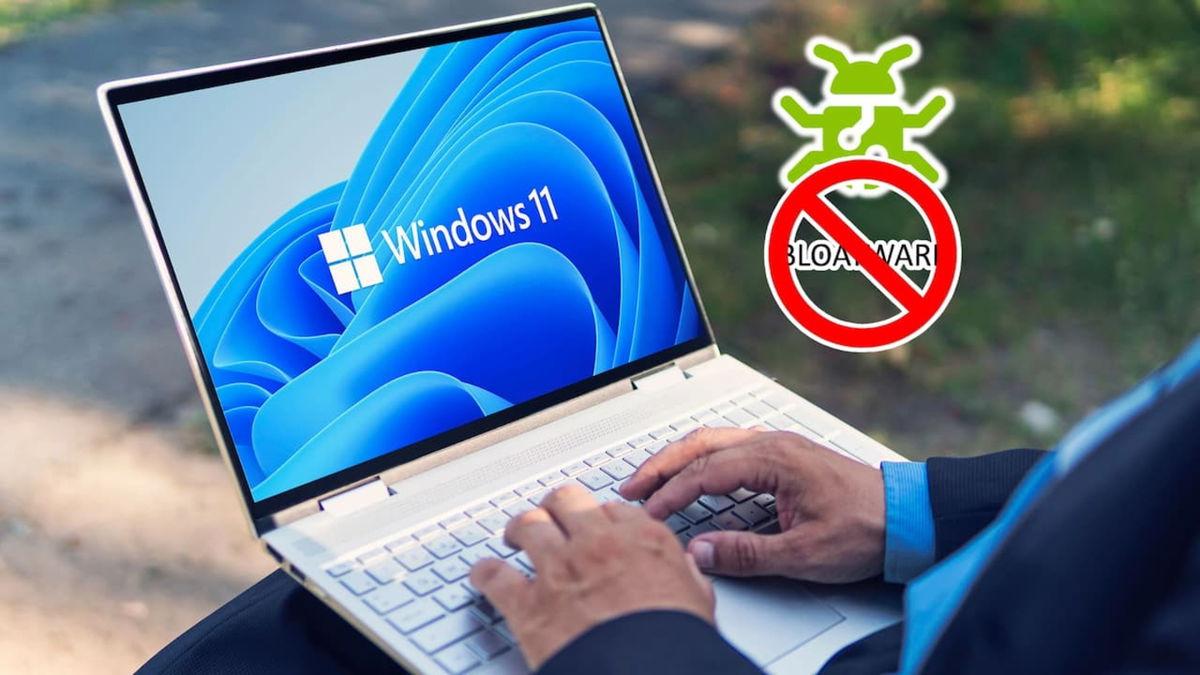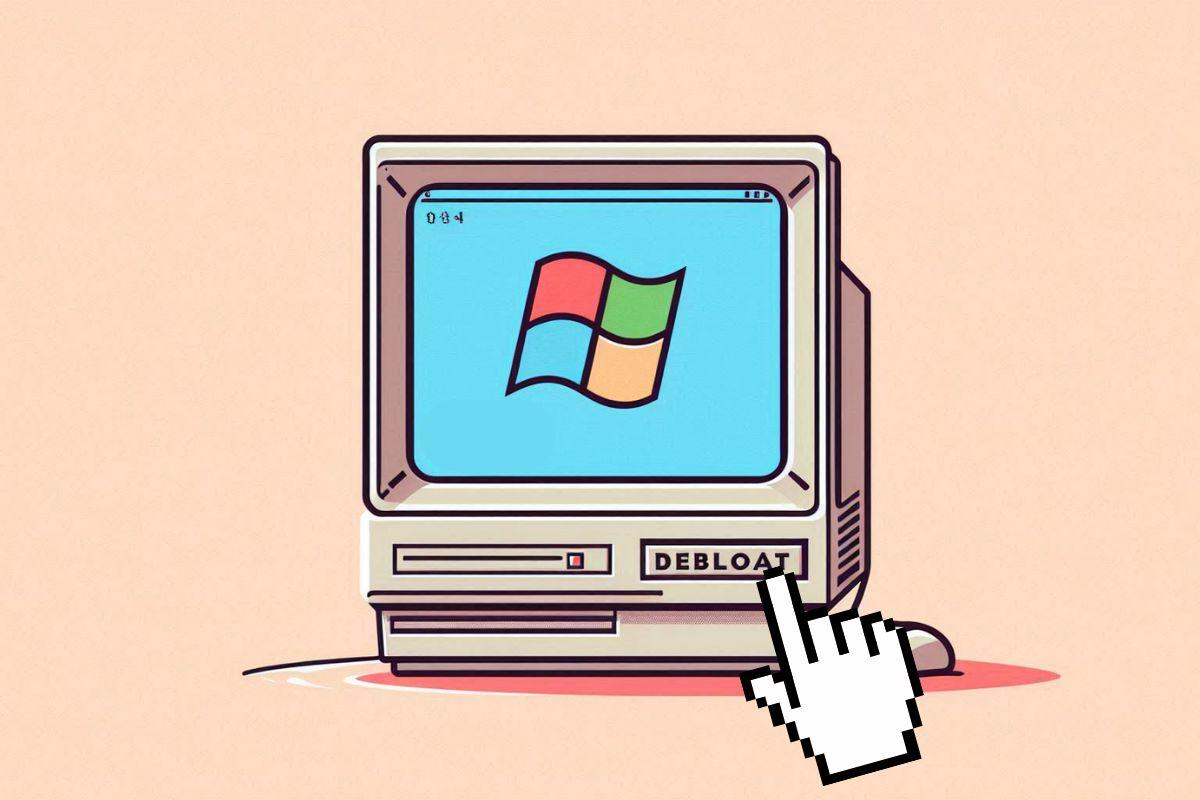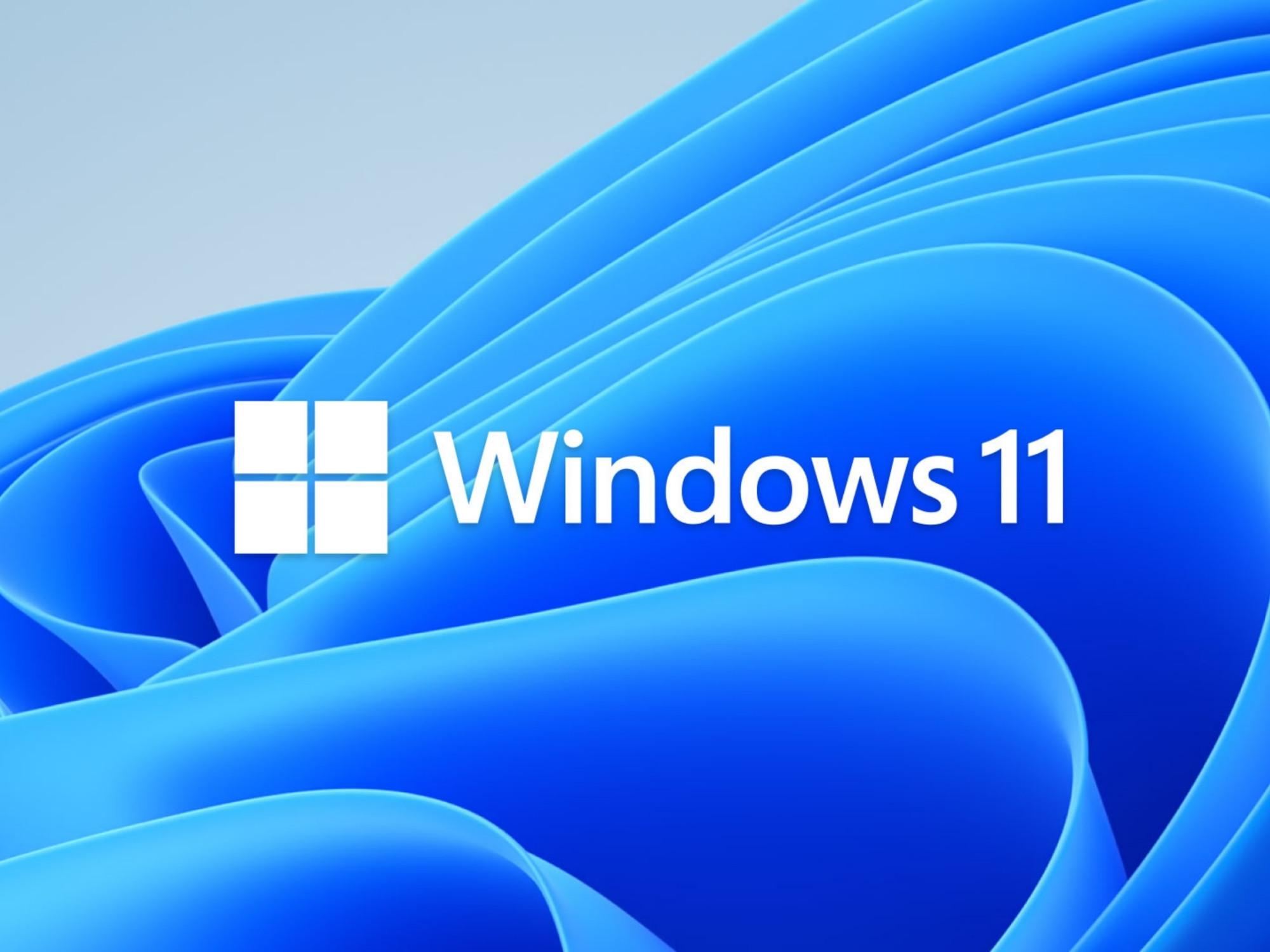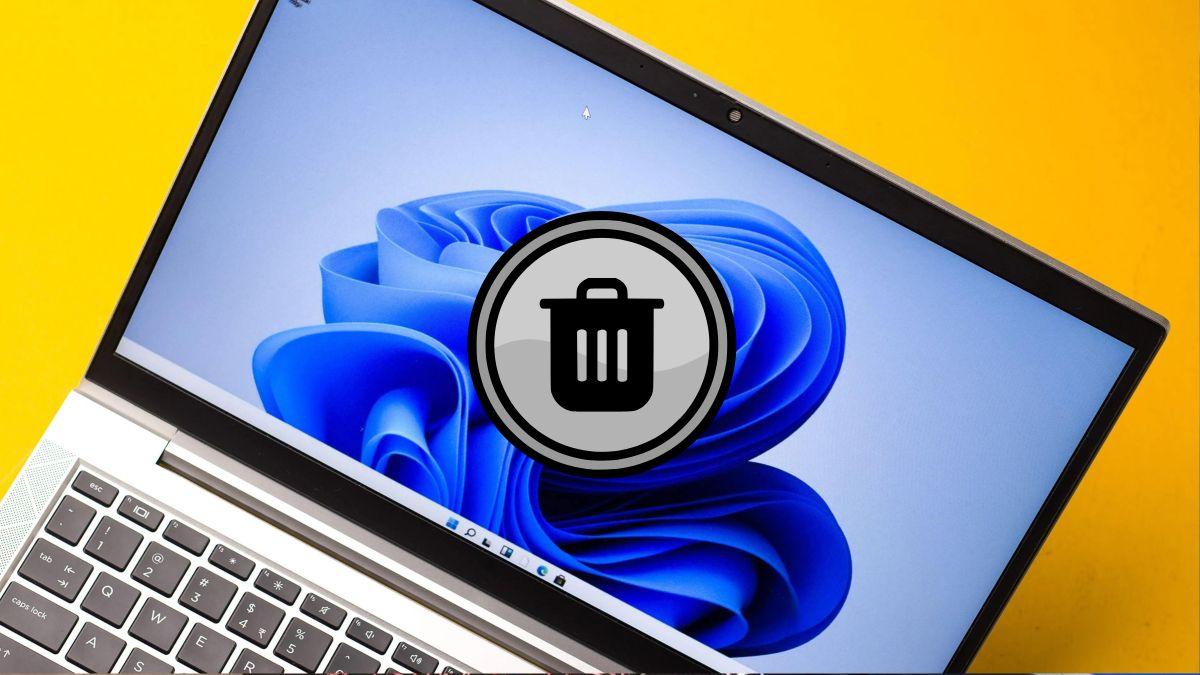- Bloatware consumes resources and can affect performance, privacy, and storage.
- Effective methods: Settings/Startup, PowerShell and tools like Win Debloat Tools or O&O AppBuster.
- Windows 11 25H2 will add native uninstall options apps default in editions with GPE.
- Caution: Create restore points and avoid unaudited scripts to minimize risk.

Windows 11 looks great with its modern, transparent interface, but that layer of shine doesn't always sit well with smaller computers. When the hardware it's a bit tight, every background process and every app you don't use It can end up taking its toll on you Boot, RAM and CPU consumption.
That's why one of the first adjustments many people make when they get a new device is to remove the excess. In addition to details like Disable BitLocker on computers without encryption, uninstall redundant antivirus software (if you're already using Microsoft's) or even reconsider using Edge if you don't need it, there's a key step: remove bloatwareHere's a complete guide, including manual methods, PowerShell, reliable tools, and the new features coming with Windows 11 25H2.
What is bloatware in Windows 11 and why does it affect you?
When we talk about bloatware we refer to software that comes pre-installed without you having asked for it: applications, utilities, services and packages that appear when you first turn on your PC. It is not malware; in fact, it is usually legitimate and safe, but inflates the system with items you rarely need.
Beyond the space it occupies, the problem is that Some of these apps run in the background, consume RAM and CPU, or add telemetry and activity-monitoring components. On modest computers, this is noticeable, and very noticeable.
This phenomenon is not exclusive to Microsoft. It happens frequently in Android and even in closed ecosystems, where manufacturer apps or promotional agreements also appear as standard.
Why do they exist? The answer is simple: trade and distribution agreementsThe fact that Spotify appears preinstalled after reinstalling Windows is no coincidence; there's a deal behind it. The result: a "bulkier" system that needs to be streamlined.

Advantages of removing bloatware
By cleaning the system you win on several fronts: performance, privacy and storageBy not loading unnecessary processes, you free up memory and CPU; by disabling telemetry services, you reduce tracking; and by uninstalling apps, you recover disk space.
In real tests after a thorough debloat, there are computers that boot with about 4 GB of RAM consumed. to move around 2 GBIt's not always worth it on powerful machines, but if your PC is just right, the jump is noticeable.
How to Identify Bloatware: Common Clues and Examples
Not every icon you see is taking up real space. Many Start menu anchors are shortcuts that trigger the download when you click them. Removing them tidies up the menu, even if you don't recover storage. Still, there are apps and packages that are installed and can be deleted.
Examples that are often cited (depending on the edition and manufacturer) include OneNote, Game Bar Xbox, Get help, People, Mail, Film and TV or even components like Cortana or Bing integrations in search. Consider your case: if you don't use them, they're unnecessary.
Manual methods: Start, Settings, and Control Panel
If you don't want to complicate things, start with the basics. From the start menu You can unpin and, in many cases, uninstall instantly: right-click on the app and select option uninstallIf you don't see it, go to All Apps, scroll down until you find it, and repeat the process.
In Settings, go to Apps > Installed AppsThere you will see everything that is in the system. Find the apps you don't need (for example, Sticky Notes if you don't use it) and tap Uninstall. Repeat for each one. It's quick and safe.
Some classic applications are still managed from the Control Panel > Programs and Features. If there are manufacturer software or trial versions, uninstall them from there and free up space and resident processes.
Bonus tip: Open the Start menu with the Windows icon in the taskbar and you'll see sponsored apps. With right click you can remove them in a moment and clear your view.
PowerShell and Terminal: From Selective Wipe to Batch Debloat
When you come across apps that won't let you uninstall them from the interface, PowerShell is your ally. Open Windows PowerShell as administrator and use the command:
Get-AppxPackage *appName* | Remove-AppxPackage
Replaces appName by the package to be removed. It is a direct method to uninstall UWP apps that do not offer an uninstall button in Settings.
If you're going for something more automatic, on Windows Bus Terminal you can throw a script that download and run a debloat tool with a single command. Type:
iwr -useb https://git.io/debloat|iex
A window will open with options to disable Cortana, the reader PDF from Edge, dark mode, delete OneDrive or delete bloatware in batch with the button Remove all bloatware. Remember that these utilities require administrator permissions; are open source, which allows its content to be audited, but caution is advised.
Reliable third-party tools: Win Debloat Tools and O&O AppBuster
Third-party utilities go where Settings can't. They allow you to deactivate services, telemetry and blocked apps., and even revert changes. Among the most effective are Win Debloat Tools and O&O AppBuster.
Win Debloat Tools (available on GitHub) runs from the terminal. Download the ZIP, unzip it, and open the file. OpenTerminalHere.cmd to launch a console in the project folder. Then, run:
Set-ExecutionPolicy Unrestricted -Scope CurrentUser -Force; ls -Recurse .ps1 | Unblock-File; ."WinDebloatTools.ps1"
The script will display a simple dialing interface what settings to apply and what apps to remove. when pressing Apply Tweaks, you'll see how packages are uninstalled, telemetry is disabled, and system settings are optimized. It's even capable of removing Microsoft Edge or clean Windows.old with one click, and has options to restore what was removed.
For its part, O&O AppBuster It is portable, requires no installation and offers three modes: Current user, All users o Team. Before touching anything, make a restore point from the tool itself to undo any changes. Check the apps you want to remove, tap remove and decide if it affects only your profile or everyone; confirm with Yes and ready.

Disabling services: useful, but be careful
Another way to lighten the system is disable non-essential services. Search for "Services" in Windows, filter by those that are running, and, one by one, enter their properties to click Stop and set the start to Manual o Disabled.
This method is powerful, but requires knowing what each service does. Take note of every change to roll back if something stops working, and test one at a time. If you detect a failure, re-enable the associated service and restore autostart.
Headless Automated Scripts: Why They're Not the Best Idea
There are scripts that do "everything" for you without asking. Although they are effective, We do not recommend its indiscriminate use. Not knowing exactly what commands run can lead to the removal of necessary components, corrupting the system, or even erasing data.
If you decide to use them, do so after reviewing them calmly and with a backup or restore point createdThe interface-based alternative (Win Debloat Tools or O&O AppBuster) lets you choose, apply modules, and revert.
What's new in Windows 11 25H2: more native uninstall options
Microsoft is going to give more control to the user. In the update Windows 11 25H2 Some may uninstall pre-installed apps like Media Player, Notepad, or Xbox without resorting to external tools.
This option appears as Remove Default Microsoft Store Packages within Windows Components > Package Deployment in the Group Policy Editor. Note: It will only be available for editions with access to the GPE. (Pro and Enterprise), leaving out the Home edition.
In addition, due to legal issues of the European DMA, in the EU it will be possible to uninstall Microsoft Edge, but not universally in all regions. 25H2 will arrive as enablement package, which speeds up installation compared to previous releases. After the setbacks with 24H2 (AutoHDR, Wi-Fi), the idea is to minimize risks and time.

When debloat pays off and when it doesn't
On current devices with plenty of RAM and a good processor, deleting four apps won't change your life. Where it is most noticeable is on modest PCs or with limited storage. In this case, it's worth disabling telemetry, deleting unused packages, and optimizing startup.
If your machine is overpowered, prioritize the basics: remove anchors from Start, uninstall the obvious and disable anything you don't want to run at startup. That's it, you'll be clean without any hassle.
Prefer not to touch apps? Free up space and speed up your system.
If you don't feel like removing bloatware, there is another way: optimize storagePartition management tools like EaseUS Partition Master allow you to resize/move partitions, clone disks or expand drive C: taking advantage of adjacent free space.
The typical flow is to create unallocated space adjacent to C: shrinking a contiguous partition and then extending C: into that space. Finally, apply the changes. This doesn't remove bloatware, but it does give you room to updates and caches, which reduces bottlenecks.
Safety recommendations before touching anything
Before you start deleting, create a restore point or a backup. It's fast and saves you trouble if something doesn't go as expected. The recommended tools also allow you to: revert tweaks and reinstall apps of the System.
Avoid running scripts that you don't understand and review each setting you makeTake your time: it's better to go in stages (Start/Settings > PowerShell > Tools) than to launch everything at once.
Quick Start Guide: Methods, Use Cases, and What to Expect
- Manual method (Start/Settings/Panel) — Safe, ideal for beginners. App-based removal, risk-free and with complete control.
- PowerShell with
Get-AppxPackage— More range for rogue UWP apps. Note the package name. - Terminal Script
iwr -useb https://git.io/debloat|iex— Automate common settings, with interface and options to customize. - Win Debloat Tools / O&O AppBuster — Maximum coverage and reversal. Telemetry, Edge, Windows.old, component reinstallation, etc.
- Disable services — Effective but delicate. Only if you know what each service does and document changes.
Cleaning Windows 11 of bloatware isn't a race; it's a process that deserves calm. With manual methods and trusted tools, you can Regain performance, gain privacy and free up space No drama. And with 25H2, more convenient native options for uninstalling default apps will arrive if you use editions with group policies. If your PC is running on a tight budget, you'll notice the change; if not, at least you'll be left with a more organized system tailored to your needs.
Passionate writer about the world of bytes and technology in general. I love sharing my knowledge through writing, and that's what I'll do on this blog, show you all the most interesting things about gadgets, software, hardware, tech trends, and more. My goal is to help you navigate the digital world in a simple and entertaining way.